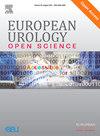Incidence, Management, and Prevention of Gynecomastia and Breast Pain in Patients with Prostate Cancer Undergoing Antiandrogen Therapy: A Systematic Review and Meta-analysis of Randomized Controlled Trials
IF 3.2
3区 医学
Q1 UROLOGY & NEPHROLOGY
引用次数: 0
Abstract
Background and objective
In patients with prostate cancer treated with antiandrogen monotherapy, gynecomastia and breast pain are relatively common. In the setting of androgen receptor pathway inhibitors (ARPIs), the incidence of these adverse events (AEs) remains unclear. In addition, the effect of prophylactic treatment on gynecomastia remains uncertain. We aimed to evaluate the incidence of gynecomastia and breast pain in prostate cancer patients treated with ARPIs compared with androgen deprivation therapy (ADT) and the effect of prophylactic treatment for these AEs due to antiandrogen therapy.
Methods
In June 2024, we queried four databases—PubMed, Scopus, Web of Science, and Embase—for randomized controlled trials (RCTs) investigating prostate cancer treatments involving antiandrogen therapy. The endpoints of interest were the incidence of these AEs due to ARPIs and the effect of prophylactic treatment for these.
Key findings and limitations
Eighteen RCTs, comprising 5036 patients, were included in the systematic review and meta-analysis. ARPIs included enzalutamide, darolutamide, and apalutamide. The results indicated that patients who received ARPI monotherapy had a significantly higher incidence of gynecomastia than those who received ADT monotherapy (risk ratio [RR]: 5.19, 95% confidence interval [CI]: 3.58–7.51, p < 0.001). There was no significant difference in the incidence of gynecomastia between ARPI plus ADT therapy and ADT monotherapy (RR: 1.27, 95% CI: 0.84–1.93, p = 0.2). Prophylactic tamoxifen or radiotherapy reduced significantly the incidence of gynecomastia and breast pain caused by bicalutamide monotherapy.
Conclusions and clinical implications
We found that ARPI monotherapy increases the incidence of these AEs significantly compared with ADT. In contrast, ARPI plus ADT therapy did not result in a higher incidence of AEs. The use of either tamoxifen or radiotherapy was effective in reducing the incidence of these AEs due to bicalutamide monotherapy. These prophylactic treatments could reduce the incidence of AEs due to ARPI monotherapy. However, further studies are needed to clarify their efficacy.
Patient summary
Although androgen deprivation therapy (ADT) improves overall survival in patients with prostate cancer, it is associated with several complications. Androgen receptor pathway inhibitor (ARPI) monotherapy has emerged as a promising strategy for improving oncological outcomes in these patients. However, ARPI monotherapy increases gynecomastia and breast pain in prostate cancer patients compared with ADT, while ARPI plus ADT did not result in a higher incidence of adverse events.
接受抗雄激素治疗的前列腺癌患者男性乳房发育和乳房疼痛的发生率、管理和预防:随机对照试验的系统回顾和荟萃分析
背景与目的在接受抗雄激素单药治疗的前列腺癌患者中,男性乳房发育和乳房疼痛较为常见。在雄激素受体途径抑制剂(arpi)的设置中,这些不良事件(ae)的发生率仍不清楚。此外,预防性治疗对男性乳房发育的效果仍不确定。我们的目的是评估arpi治疗与雄激素剥夺治疗(ADT)相比前列腺癌患者男性乳房发育和乳房疼痛的发生率,以及抗雄激素治疗引起的这些ae的预防治疗效果。方法在2024年6月,我们查询了pubmed、Scopus、Web of Science和embase四个数据库,以获取涉及抗雄激素治疗的前列腺癌治疗的随机对照试验(RCTs)。研究的终点是arpi引起的不良事件发生率和预防性治疗的效果。主要发现和局限性系统评价和荟萃分析纳入了18项随机对照试验,包括5036例患者。arpi包括恩杂鲁胺、darolutamide和apalutamide。结果显示,ARPI单药组男性乳房发育率明显高于ADT单药组(风险比[RR]: 5.19, 95%可信区间[CI]: 3.58 ~ 7.51, p <;0.001)。ARPI加ADT治疗与ADT单药治疗的男性乳房发育症发生率差异无统计学意义(RR: 1.27, 95% CI: 0.84 ~ 1.93, p = 0.2)。预防性他莫昔芬或放疗可显著降低比卡鲁胺单药治疗引起的男性乳房发育和乳房疼痛的发生率。结论和临床意义我们发现,与ADT相比,ARPI单药治疗可显著增加这些不良事件的发生率。相比之下,ARPI加ADT治疗并没有导致更高的ae发生率。使用他莫昔芬或放疗都能有效降低比卡鲁胺单药治疗引起的不良反应发生率。这些预防性治疗可以减少ARPI单药治疗引起的不良反应的发生率。然而,需要进一步的研究来阐明其功效。虽然雄激素剥夺疗法(ADT)提高了前列腺癌患者的总生存率,但它与一些并发症有关。雄激素受体途径抑制剂(ARPI)单药治疗已成为改善这些患者肿瘤预后的有希望的策略。然而,与ADT相比,ARPI单药治疗会增加前列腺癌患者的男性乳房发育和乳房疼痛,而ARPI加ADT治疗并没有导致更高的不良事件发生率。
本文章由计算机程序翻译,如有差异,请以英文原文为准。
求助全文
约1分钟内获得全文
求助全文
来源期刊

European Urology Open Science
UROLOGY & NEPHROLOGY-
CiteScore
3.40
自引率
4.00%
发文量
1183
审稿时长
49 days
 求助内容:
求助内容: 应助结果提醒方式:
应助结果提醒方式:


